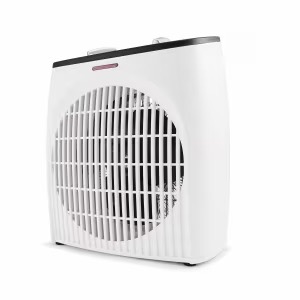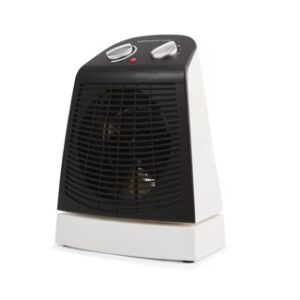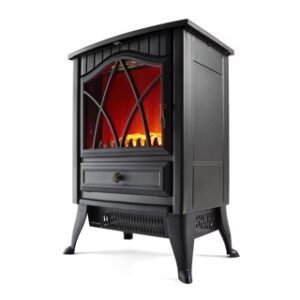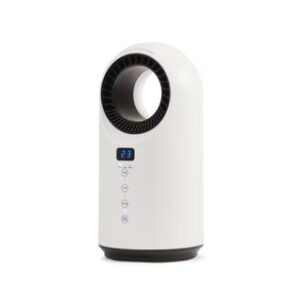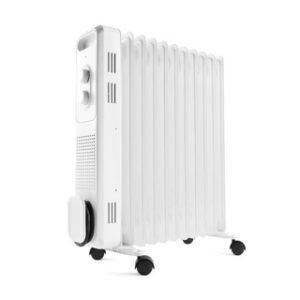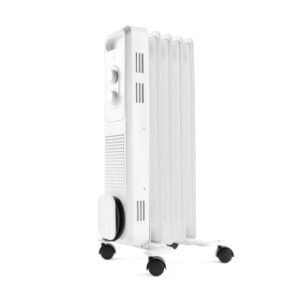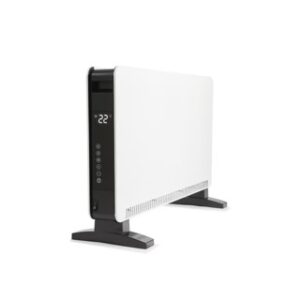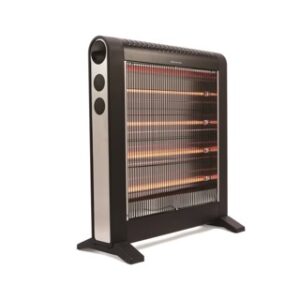Searching for a cheap way to stay warm? A Kmart heater is probably at the top of your list! The budget homegoods retailer has a bunch of heaters, and we're here to help you pick the best one for your home and budget.
Kmart heaters: Energy efficiency, specs, and price compared
We might make money if you buy something through these links. Click as many as you want.
Latest updates:
- Updated Fan Heater - Black and White pricing
- Added stock information
In this guide:
What to look for in a heater
- Price
- Heating element wattage
- Energy efficiency
- Safety features
There are a few things to consider when picking a heater, but energy efficiency and safety features should be at the top of your list.
With the cost of living constantly shifting upward, the cost of running your heater is more important than the cost of buying it. Sure you can get a cheap heater, but you may end up paying for it twice over by the time your electricity bill gets here. Electric heaters are the least energy efficient, followed by solid fuel options like wood, gas, and then solar if you can get it.
To cut down on your power bills, look for heaters with a lower power source wattage. The lower that wattage, the less electricity the heater needs to run. Keep in mind the size of heater you'll need to effectively heat your space however.
Every year we Australians forget that the cold exists and end up hurting ourselves, and our homes with heaters. With that in mind it is worth keeping an eye out for safety features like overheat protection, and tip-over switches.
Kmart fan heaters
Fan heaters are usually cheap to buy but more expensive to run in the long term. Kmart fan heaters start as low as $17 (or even lower at Bunnings) but their power consumption can exceed 2000W which can stack your bill up quickly.
It's not all doom and gloom though, fan heaters are not only cheap to buy, but also portable, quiet, and warm the air efficiently. Since the fan element moves the air around the room, the newly warmed air circulates and retains the heat more efficiently than convenction or oil heaters.
They work best in well insulated rooms which is a bummer for Australian homes, but in ideal circumstances every 1000 watts of power should warm around 9 metres squared.
This kmart fan heater is the cheapest, no frills option. If you're looking for a simple fan heater that will warm up your feet then this will do the trick.
For it's size it has a high source wattage though, so be warey of how long you keep it running for.
What seperates the oscillating fan heater from Kmart's budget fan heater are the price, an additional fan setting, and that it spins. You'll pay $10 extra for the fan to rotate back and forth, and gain a fan only setting.
If you're in the market for both a fan and a heater this may be a good option to cut back on the amount of devices you have in your home.
Oh it's cute alright, but you're paying quite the premium for the adorable factor. Kmart's Flame Effect Fireplace Heater gives you a cosy aesthetic, but the $79 price tag is a bit too high for the heater's actual capabilities.
It is less powerful than both the oscillating, and basic fan heaters from the budget homewares retailer. While this means it will be cheaper to run it will only cover around 8.3 metres squared on the lower setting.
Ceramic heating
Kmart's bladeless ceramic fan heater is the most feature-packed heater available in the range. Temperature control is down to the degree, it has a 12-hour timer, a remote control, and we can't overlook the ceramic element.
Unlike metal coils used in many other fan heaters, ceramic heaters enclose the heat source in a ceramic coating. This coating lowers the possibility of creating sparks and igniting flammable materials.
How much does it cost to run a heater?
The cost of running a heater varies depending on energy pricing, the type of heater, and it's wattage. In-built systems like heated floors, reverse cycle air conditioning, and heat shifters are generally more efficient but have high install costs. So for a good portion of Australians, portable heaters are the way to go. For these, electric heaters are the most expensive to run, followed by gas, hard-fuel, and then solar.
Kmart heaters are all electric, so the cost to run these is entirely linked to your electricity bill. To calculate the approximate cost of running one of these heaters you'll need to know your kWh energy price, and the wattage of the device. Simply multiply your kWh cost by the amount of kilowatts the device uses.
More broadly, we know that the average cost per megawatt hour in Australia was $139 during the 2022-23 financial year. That is about $0.14 kWh, which means that running a 2000W heater will cost $0.28 per hour. For comparison, a 60W light bulb costs around $0.01 per hour at this same price.
While 28 cents per hour doesn't seem like much, over the course of Winter it can add up. If you run your heater for eight hours per day, over the course of our 92 Winter days that comes to an extra $206 tacked onto your bill.
Here are how much each kmart heater will cost to run per hour, based on these averages.
Kmart oil heaters
Compared to fan heaters, oil heaters are the more expensive option but they have good reason to be. Oil heaters run silently, retain heat well, won't dry out the air, use less power, and have a lower fire risk. That is a lot of upsides!
Heating up a room can make the air dry which in turn can effect your lungs, throat, skin, and has even been linked to higher stress levels and risk of illness. Buying a humidifer can help offset this, but that is just another expense. Since oil heaters simply heat up oil and pass that heat to the metal columns to radiate outward, the air warms without burning up the water molecules. This also means that they're less likely to cause fires since contained oil is less prone to sparking.
The downsides are that they take some time to warm up, and the larger models can still pull quite a lot of power.
Kmart's small oil heater is also its most energy efficient heater overall. Using as little as 850W on the lowest setting, this heater will only cost around $0.12 per hour to run.
While it is only suitable for smaller spaces it represents a great balance between cost and efficiency.
Even though oil heaters are more energy efficient, the larger they get the more power they need. Kmart's 11 Fin Oil Heater needs a significant amount of power, but in saying that it will heat up a large space.
If you're after a something that can handle a room up to 18 metres squared, this device will be the best kmart heater for most households.
How we review heaters (and give them that star rating)
We use standardised testing across every product we review to ensure we're giving you the best recommendations possible. Our team designs these tests uniquely to the product category, taking into account the most important factors for consumers.
When we review heaters there are four main considerations;
- Price: What is the value proposition? Are you being asked to pay too much for too little?
- Power: Both the power it has, and the power it uses.
- User experience: What is it like to set up and actually use this heater as a person, not just as numbers on a screen.
- Additional features: Are all the safety features there? Is there a remote or a timer that you can use so you don't have to get out from under a warm blanket?
Of these we weigh power as the most important. According to the Australian government heating and cooling accounts for 20-50% of energy usage in our homes, so it is one of the most power-hungry decisions you're going to make. After that, price and features tie for second, but we do prioritise safety features over any other fun tidbits the heater may have.
Finally we look at the user experience. If we haven't had a chance to get our hands on a product yet we will ommit the user experience from the score, but don't worry it won't weigh down the rating.
Kmart convection heaters
Rather than relying on a fan, convection heaters simply warm the air that circulates over its heating element. Since these heaters use the natural air circulation in the room they tend to create a more evenly distributed warmth than other types of heaters do.
They are usually around the same price as a similarly powered oil heater, but they're more temperamental. If you've got high ceilings, a poorly insulated, or highly ventilated space then these heaters aren't going to be the right pick for you. Since they rely on air flow anywhere it leaks or is disturbed can inhibit their effectiveness- so you'll also want to make sure nothing is blocking it. Cold air can also slow down the heating process since that cold draft won't be able to heat up as much as other air in the room.
Kmart's only convection heater has all the bells and whistles. With four heat settings, a 24-hour timer, a remote control, and all the safety features it packs a punch for $69.
At 2000W it should cover large spaces, but just make sure you pop it somewhere with good airflow and block the door gaps to get the most out of it.
Kmart radiant heaters
Radiant heaters and convection heaters are similar in the sense that they warm the air around them, radiant heaters however are more targetted. Rather than blowing warmed air upward so it can recirculate, radiant heaters warm the air directly around it which means it is more effective in warming a certain range but less so in warming an entire room.
Since the heat is direct the radiant heater can warm up a room very quickly, so won't need to be on as much as say a convection heater. You'll find radiant heaters in open environments a lot of the time, but you can use them inside the home as well.
While Kmart's singular radiant heater is powerful it is a bit bareboned on additional features. The 2400W heater has two heat settings, and a safety tip-over switch but that is about it.
On the lower setting it is more energy efficient than a bunch of Kmart's fan and convection heaters, meaning it will be cheaper to run over long periods. Not so much if you amp up the heat though.
Related Articles




